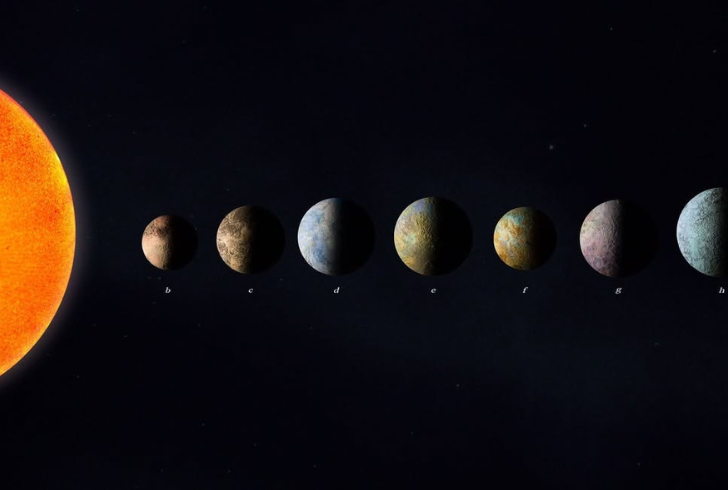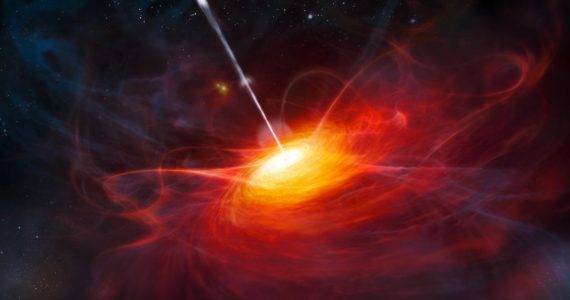The search for planets beyond our solar system has led to some fascinating discoveries, but one of the most intriguing is planet b, orbiting the star system TRAPPIST-1. This Earth-sized planet has sparked the curiosity of astronomers, especially as new research suggests it might have an atmosphere, a possibility that raises many exciting questions about its potential for habitability.
With the help of the James Webb Space Telescope (JWST), scientists have been able to probe the planet’s characteristics, offering us a glimpse into the mysteries of exoplanets.
What Makes Planet B So Interesting?

The TRAPPIST-1 system, discovered in 1999, houses seven Earth-like planets orbiting a red dwarf star. These planets, including planet b, are located in the “habitable zone”—the region where liquid water could potentially exist. At just 39 light-years away, the TRAPPIST-1 system is close enough to study with advanced telescopes like JWST. These observations offer a unique opportunity to learn more about planets that share similarities with Earth.
While scientists have long suspected the planets in this system could be Earth-like, initial studies of planet b didn’t seem promising. It was believed to be a rocky, barren world with no atmosphere. However, recent findings suggest otherwise.
New research indicates that planet b might not be the dead, airless rock it was once thought to be. In fact, it could have a hazy, carbon dioxide-rich atmosphere similar to that of Titan, Saturn’s largest moon.
The Two Possible Scenarios for Planet B
There are two distinct possibilities when it comes to planet b’s atmosphere, according to recent findings using JWST’s mid-infrared observations. The first scenario suggests that the planet could be devoid of any atmosphere, a barren world with no signs of weathering on its surface. This could imply that the planet experiences geological activity, such as volcanic eruptions or plate tectonics. If this is the case, planet b might be more geologically active than initially thought.
On the other hand, the second scenario presents a more intriguing possibility: planet b could have a thick, hazy atmosphere made up of carbon dioxide. This would make it somewhat similar to Titan, which has a dense atmosphere composed mainly of nitrogen and methane. The idea of planet b having an atmosphere opens up exciting avenues for further research into its climate, weather patterns, and potential for supporting life.
Why the Uncertainty?
The new findings regarding planet b come with their own set of uncertainties. Studying exoplanets—planets that orbit stars outside our solar system—presents a unique set of challenges. Astronomers can only observe these planets indirectly, often relying on the light they reflect or emit. In the case of planet b, observations are complicated by the fact that TRAPPIST-1, the star it orbits, is a red dwarf star with starspots and eruptions that can interfere with measurements.
However, JWST’s ability to observe the infrared light emitted by the planet has allowed scientists to get a clearer picture of planet b. By observing the planet’s heated dayside as it passes behind its star, astronomers can gather important data about the planet’s atmosphere and surface conditions.
What This Means for the Search for Habitable Planets

The potential for planet b to have an atmosphere is significant in the search for habitable planets. Red dwarf stars, like the one in the TRAPPIST-1 system, make up about 70% of the stars in our galaxy. This means that planets orbiting these stars are some of the best candidates for studying atmospheres that could support life. If planet b does indeed have an atmosphere, it would be an exciting step forward in understanding the conditions that make a planet habitable.
Dr. Michiel Min, one of the researchers involved in the study, said that the chemistry of planet b’s atmosphere is expected to be very different from anything we’ve seen before. He suggests that the atmosphere might not resemble anything we know in our solar system, which could lead to groundbreaking discoveries about how atmospheres form and evolve on other planets.
The Future of Planet B Research
As exciting as these initial findings are, much more research is needed to fully understand planet b and its potential to support life. Scientists will continue to study the planet using JWST and other telescopes, hoping to uncover more details about its atmosphere and surface. The possibility that planet b has an atmosphere makes it one of the most promising targets in the search for extraterrestrial life.
Planet b remains an enigmatic world, full of possibilities and mysteries. Whether it is a barren, rocky world or a planet with a thick, hazy atmosphere, it is clear that further exploration will continue to unveil new insights into the nature of exoplanets.
As researchers continue to analyze data from the James Webb Space Telescope, we may soon learn more about this fascinating planet and its potential for hosting life in the distant future.




